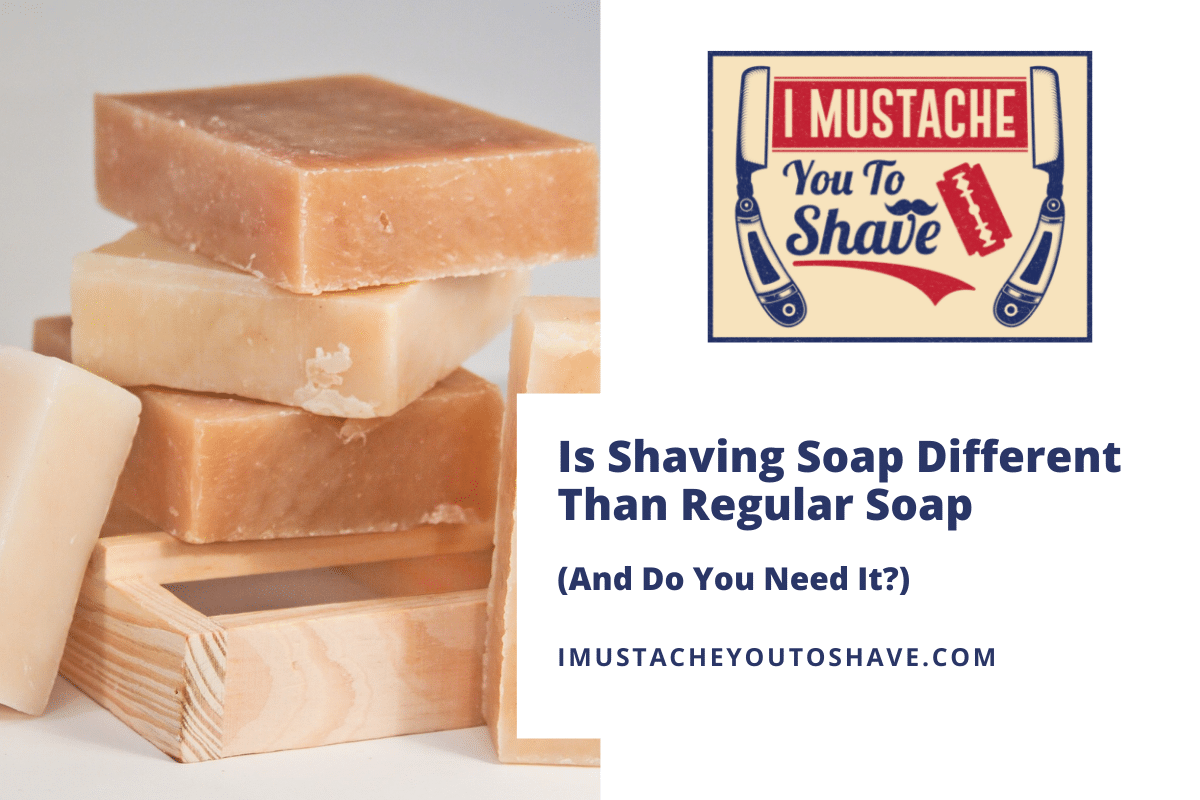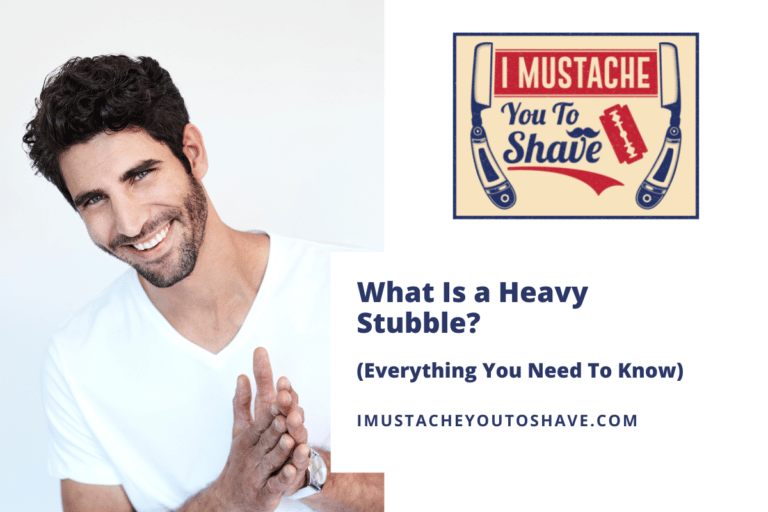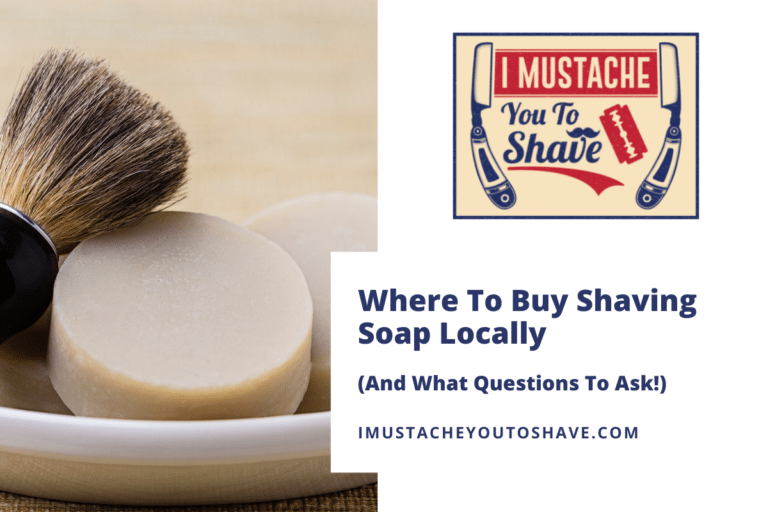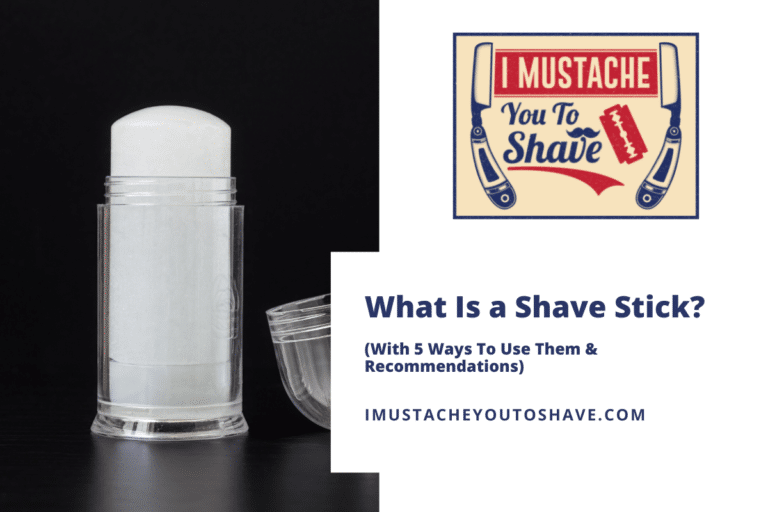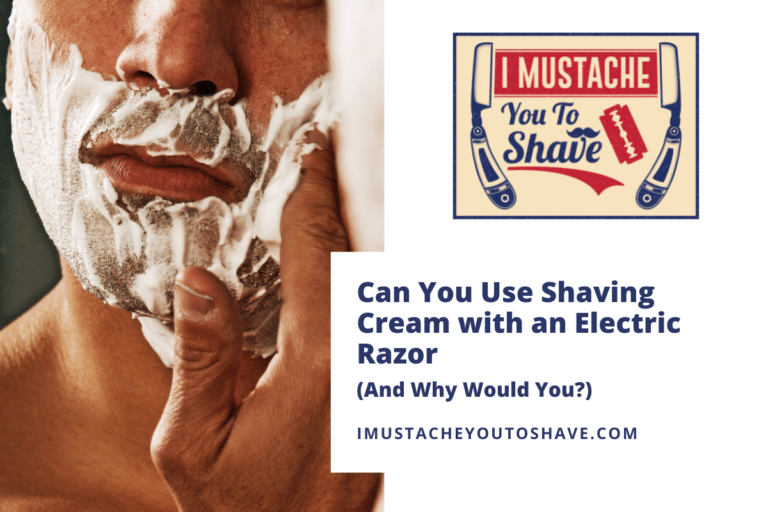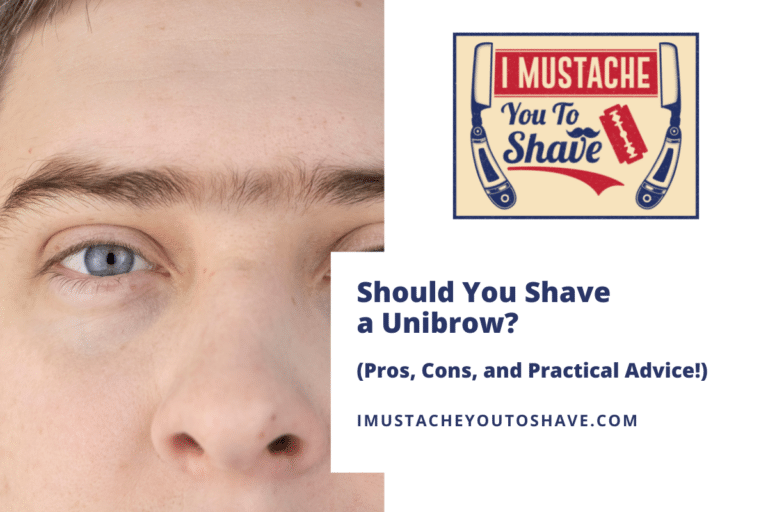Is Shaving Soap Different Than Regular Soap (And Do You Need It?)
If you have thought about shaving with something other than an aerosol can of foam or gel you may have noticed shaving soaps and wondered what they are all about. Is shaving soap actually different from regular soap?
Shaving soap is different from regular soap and is an essential part of the wet shaving experience. It is necessary for those men who have made the switch from a disposable or electric razor to a double-end safety razor or straight razor. Instead of cleaning skin, shaving soap is designed to create a layer of lather between the razor and bare skin.
Keep reading for a complete exploration of the differences (and similarities) between regular soap and shaving soap.
Shaving soap VS regular soap – differences and similarities
Soap is soap, right? Isn’t it just a substance made from mixing together fatty acids and oil like Tyler Durden showed us in Fight Club? While the basic chemistry may be the same – taking a base of fat and adding oil, then cooking it up into a solid – the two kinds of soaps are used for very different purposes.
Regular soap is designed for cleaning, to strip dirt and grime off the skin. It attracts dirt molecules from the skin and pulls them off, leaving behind clean skin. Shaving soap, on the other hand, is designed to create a layer of lather that adheres to the skin, leaving a barrier between the razor blade and the bare skin. It is also meant to create slickness, allowing the blade to pass smoothly over the skin without catching and digging in and cutting the skin.
Let’s examine the attributes of soaps and do a compare and contrast between shaving soap and regular soap such as:
- Shaving ability
- Ingredients
- Process
- Scent
- Longevity
- Price
Shaving ability
The most important distinction between regular soap and shaving soap is shaving ability – which one gives you the better shave?
Shaving soap is specifically designed to aid in wet shaving by creating a slick barrier between the blade and your beard.
Regular soap does not create the lather required to achieve a smooth, clean shave.
Shaving soap
Thick and slick is what shaving soap does.
When you add some water and swirl a shaving brush over it, you get a mound of thick foam that you then spread over your face to create a base layer of lather that protects it from cuts.
The lather is also very slick which lets your razor pass over your skin unimpeded while it slices the hairs that have grown out from it.
Regular soap
While shaving soap lather is meant to stay on the skin, regular soap lather has a different purpose.
It is meant to create a thin layer that strips off the dirt from the skin rather than protecting it from a razor blade. Regular soap is made for cleaning and does not make a lather that is thick enough to provide adequate protection for shaving.
If you were to attempt shaving with regular soap, you would only create a thin runny lather that dripped off your face before you had a chance to pass your razor over it.
Ingredients
Since they are designed to perform different jobs, the ingredients of regular soaps and shaving soaps differ fairly significantly.
Shaving soaps include additional ingredients that create a thick lather, hydrate your skin, and may even help to keep your skin healthy.
Regular soaps tend to be much more basic as they are designed specifically to clean.
Shaving soap
Potassium and sodium salts and bentonite clay are added to shaving soaps to increase lather-making ability, soften beard hairs, and help keep the lather stable.
Shaving soaps also typically include things like castor oil, palm oil, and cocoa butter which help increase slickness in the lather. Hydration is another benefit of shaving soaps as they can include moisturizing agents like aloe vera and avocado oil to keep your skin from drying out.
Finally, vitamin E is added to many shave soaps to help keep the skin healthy.
Regular soap
Regular soaps have a much slimmer list of ingredients as they are essentially just animal or vegetable fat, lye, and water mixed together and hardened into a bar.
Scents and essential oils are added to give soaps fragrance and color, but regular soaps lack the specialized ingredients necessary to produce a lather that is suited for shaving.
Process used to make it
Saponification is the term that defines the soap making process, which is largely the same for both regular and shaving soaps.
It is essentially a chemical reaction between the lye and water solution and the fats and oils. The addition of extra ingredients is the key differentiator in the two processes.
Shaving soap
To make shaving soap, water and lye are first mixed into a solution which will rapidly start to heat up. Next, the fats and oils are melted into liquid form. Once the two mixtures cool down and are at roughly the same temperature they are combined and stirred to produce a batch that is even in color and consistency.
The lather builders are the next to be added, so the salts and bentonite clay are mixed in and then the slickness agents such as cocoa butter or palm oil. Finally any vitamins, moisturizers, and scents are added and mixed in to create the shaving soap.
The completed mixture is then poured into molds and cooled down. Following cooling, the soap has to cure for several weeks to draw out any moisture left over from the saponification process.
Regular soap
The same chemical reaction produces regular soaps, as they are basically just water, lye, and fats combined with scents and coloring.
While shaving soaps are built for performance, regular soaps usually emphasize other factors like color, scent, or shape.
Scent
The possibilities for soap scents are limited only by the imagination.
A quick internet search will turn up all manner of scents that include everything from flowers to fruit to whiskey to bacon. In general however, the two categories do tend to have families of scents that define them.
Shaving soap
Shaving soaps tend to feature pleasant and masculine scents.
You’re likely to find sandalwood, pine trees, leather, vanilla, and citrus fruits as the dominant scents in the shave soap universe. The smell of many of the leading shave soaps on the market will remind you of old-time barbershops.
Regular soap
Everyday soaps come in countless scents, but when you think of a basic bar soap, chances are it will have a scent that features floral or herbal notes.
Regular soaps tend to smell far less masculine than shaving soaps.
A stroll through the garden and pantry will give you the general idea as popular scents include things like lavender, jasmine, thyme, lemon, mango, etc.
Longevity
While perhaps not a true apples to apples comparison, as a rule of thumb shaving soap will last longer than regular soap.
This is due to the makeup of the different soaps and the amount of lather generated.
Shaving soap
Once you start using a shaving soap with a brush, you’ll notice that it takes a long time to work your way through an entire bar or puck.
A good brush does not need much soap at all to whip up a suitable lather, so shaving soap becomes quite cost-effective.
The only drawback to this is that if there are several scents or brands of shaving soap you want to try, you probably will be waiting a while to whittle down your existing soap.
Regular soap
Regular soap in contrast seems to turn from bar to sliver in the blink of an eye.
Since the lather regular soap produces is much thinner, it takes much more soap to produce the same amount as a small amount of shaving soap would.
Price
Price is not a huge differentiator between shave soap and regular.
Shaving soap is typically sold by the individual bar or puck while regular soap is most often seen in multi-packs.
Shaving soap
You can find shaving soaps at most grocery and big-box retail stores for as little as $3-$5.
You can also explore shaving niche websites that sell dozens of brands and scents of soap with a huge range of prices. You’ll find the same under $5 offerings as you would in the drug store, but you’ll also find high end artisan soaps that can cost $50 or more.
Regular soap
Depending on what specials the grocery store is running and what coupons you find in the mail or newspaper, regular soaps can usually be found in six or twelve packs for about $5-$10.
Regular soap gets used up much more quickly than shave soap though, so on a per-use basis, you typically come out ahead by opting for a shaving soap.

